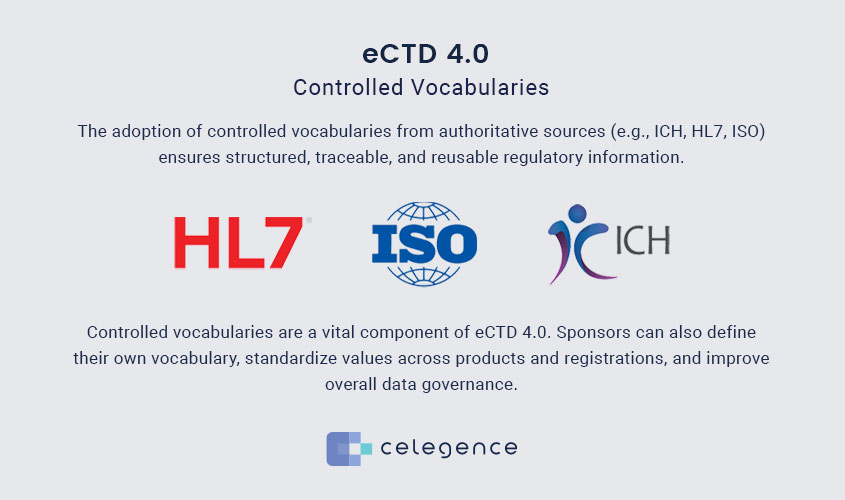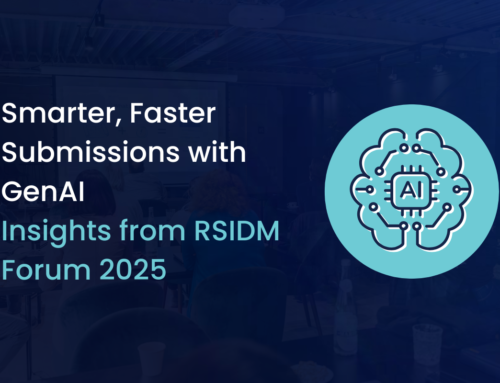
eCTD v4.0 and How Dosscriber™ Helps Improve Regulatory Submissions
Introduced over two decades ago, the electronic Common Technical Document (eCTD) concept transformed the regulatory submission process and improved global harmonization. Since its inception, numerous countries have adopted the eCTD format, with continuous refinements made to adapt to evolving technological and regulatory landscapes.
In 2010, the International Council of Harmonization for Technical Requirements for Pharmaceuticals for Human Use (ICH) formed an expert working group and implementation team to develop the next significant version of eCTD by incorporating the lessons learned from eCTD 3.2.2 and addressing health authorities’ and sponsor’s feedback. Besides the business drivers, in a broader perspective, eCTD 4.0 had to be made more flexible to support and be compatible with the HL7 standard, which allows the exchange of healthcare data for drug applications, veterinary drugs, medical devices, cosmetics, etc.
eCTD 4.0, in essence, represents a logical evolution that brings substantial, tangible improvements to sponsors and health authorities.
As implementation progresses globally, the industry must act proactively to leverage these advancements rather than wait for future versions. Based on the latest health authorities’ updates, the message is clear: the industry should not wait for v5.0.
Below, we explore the key benefits of eCTD 4.0 and how Celegence’s Dosscriber™ tool can support and optimize its adoption.
Unlock and explore the true value of your regulatory dossiers, NeeS & other regulatory dossier formats in a safe and secure, web-based eCTD viewer.
Key Benefits of eCTD v4.0
1. Content Reusability
The introduction of unique identifiers (UUIDs) enables sponsors to submit a document once and reference it in future submissions without resending the physical file. With unique IDs, documents can be reused/referenced across a sequence (referred to now as ‘Submission Unit’), across regulatory activities within an application, or even across different applications.
This advancement underscores the need for lean authoring practices to ensure content is written for reusability across various registrations and jurisdictions. Dosscriber™ supports this principle by offering templates that separate content from context. Dosscriber™ benefits include:
- Streamlined updates and lifecycle management
- Reduced inconsistencies and compliance risks
- Faster submission preparation with fewer variations (e.g., manufacturers only mentioned in relevant sections like S.2.1 and P.3.1)
- Elimination of redundancies during writing, review, approval, and publishing
2. Enhanced Lifecycle Management
eCTD 4.0 introduces the “Context of Use” (CoU) concept, which organizes documents based on their purpose/context or CTD section. Coupled with keywords, CoU facilitates lifecycle management at the contextual rather than the document level.
A single document can now replace multiple documents or vice versa while maintaining lifecycle traceability. This structured approach ensures precise content placement and easier updates over time.
Dosscriber™ templates accommodate varying levels of document granularity, empowering businesses to align content strategies with regulatory requirements effectively.
3. Improved Metadata Correction
With the introduction of Keywords, eCTD 4.0 allows sponsors to apply changes to the metadata (now called keyword definition display names) without resubmitting the physical files. Sponsors can easily correct a typo in the manufacturer name or substance name or align them to the controlled vocabulary by submitting a new display name value.
This feature enhances efficiency and improves data accuracy while reducing administrative burden.
4. Context Groups and Simplification
As described above, the CoU concept and Keywords are used to group documents in a specific context. This approach makes Study Tagging Files (STFs) obsolete. In modules 4 and 5, STFs were implemented to organize or group the documents associated with a particular study. In v3.2.2, they are required in the US, not required in the EU, and not allowed in Japan. eCTD 4.0 uses context groups to organize this content and harmonize the requirements.
5. Improved Content Organization
Using a priority number system, sponsors can now prioritize and order documents within each CTD section, allowing for better control over how submissions are presented to health authorities. This flexibility extends to future submissions, where the order can be modified or new content added.
6. Harmonized Submission Unit
eCTD 4.0 consolidates content from Modules 1 to 5 into a single exchange message schema, eliminating the need for multiple schemas and reducing submission complexity.
Unlock and explore the true value of your regulatory dossiers, NeeS & other regulatory dossier formats in a safe and secure, web-based eCTD viewer.
7. Standardized Terminology
eCTD 4.0 introduces new terminology and concepts while providing clear definitions and relationships between them (e.g., Application, Submission, Submission Unit). It eliminates ambiguity, ensuring consistent communication and understanding across global stakeholders.
8. Controlled Vocabularies
The adoption of controlled vocabularies from authoritative sources (e.g., ICH, HL7, ISO) ensures structured, traceable, and reusable regulatory information. Controlled vocabularies are a vital component of eCTD 4.0. Sponsors can also define their own vocabulary, standardize values across products and registrations, and improve overall data governance.

9. Flexibility for future updates
As noted, eCTD 4.0 relies heavily on controlled vocabularies, which is a step towards data-centric submissions. This means that changes to the CTD structure can be updated more quickly, eliminating expensive and time-consuming system upgrades.
10. Two-Way Communication
In the initial stages of eCTD 4.0 development, the working group proposed two-way communication, where health authority responses would become part of the eCTD lifecycle, as a significant enhancement. However, they ultimately omitted this feature, and it is not currently supported. The feature remains a possibility for future updates, offering further potential to streamline regulatory interactions.
eCTD viewer
It is important to point out that no stylesheet is available for eCTD 4.0. That means the submission and the content cannot be viewed in a browser. An eCTD viewer is required which supports the eCTD 4.0 format.

Dosscriber™: Your Partner in eCTD v4.0 Transition
The Dosscriber™ tool enables companies to author Right First Time (RFT) documents. With templates rooted in lean authoring principles, Dosscriber™ ensures that content is reusable, lifecycle management is efficient, and documents are submission-ready.
From our extensive experience with pharmaceutical clients, we have put great effort into avoiding document duplication. Therefore, we created eCTD templates to ensure document accuracy, consistency, and reusability across dossiers.
Key capabilities of Dosscriber™:
- Lean and Structured Authoring: Dosscriber™ reduces duplications and inconsistencies by focusing on reusable content. Common technical document templates apply tabular formats or bullet lists for factual information, when applicable. Additionally, Dosscriber uses placeholders for factual values and aligns content control boxes with IDMP implementation guidelines.
- Granularity Options: Templates support both coarse and fine granularity (single or multiple documents) for each eCTD subsection, providing flexibility when outlining your submissions.
- Embedded Font and Paragraph Styles: Dosscriber™ supports the automatic creation of TOCs, PDF bookmarks, and cross-references, resulting in optimal navigation and significantly reducing the time required to publish to eCTD format.
- Prefilled Document Headers and Footers for Global Submissions: eCTD templates include document header information and prefilled naming properties, ensuring the consistent use of metadata. These are designed to optimize reuse without rework across products, countries, and strengths.
- Preformatted Narrative: Standardized narratives for key eCTD sections provide the right amount of detail across documents, sections, and dossiers.
- eCTD Submission-Ready Documents Directly After PDF Conversion: Dosscriber™ allows you to create documents that are 99% submission-ready upon completion. Features like bookmarks, hyperlinks, and TOCs are automatically generated by following heading styles, reducing the time required for PDF publishing and speeding up dossier compilation.

Transition to eCTD v4.0 with Dosscriber™
As the industry transitions to eCTD 4.0, leveraging Dosscriber™ can save time, reduce costs, and improve compliance, ensuring a smoother journey toward regulatory success.
About The Author

Kosta Uzelac, Product Owner
Kosta is an experienced IT professional based in the Netherlands, with over 12 years of specialized expertise in managing and implementing IT solutions for the pharmaceutical industry, including business-critical applications, such as RIMS, Submission and Publishing, and DMS. As Product Owner at Celegence, Kosta oversees the continuous development and validation of innovative proprietary software applications. He is committed to delivering high-value solutions through agile methodologies, ensuring that business requirements are effectively translated into technical solutions. He holds a master’s degree in business/Managerial economics from the University of Zagreb.



